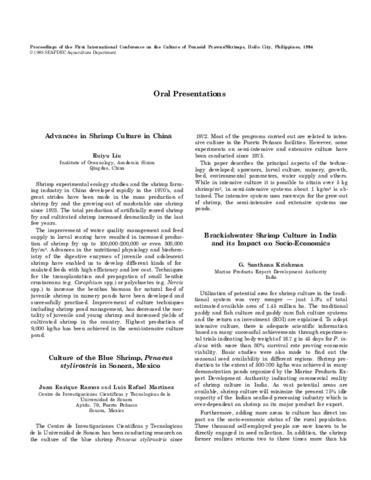Advances in shrimp culture in China
- Global styles
- MLA
- Vancouver
- Elsevier - Harvard
- APA
- Help
Share
Abstract
Shrimp experimental ecology studies and the shrimp farming industry in China developed rapidly in the 1970's, and great strides have been made in the mass production of shrimp fry and the growing-out of marketable size shrimp since 1978. The total production of artificially reared shrimp fry and cultivated shrimp increased dramatically in the last few years.
The improvement of water quality management and feed supply in larval rearing have resulted in increased production of shrimp fry up to 100,000-200,000 or even 300,000 fry/m3. Advances in the nutritional physiology and biochemistry of the digestive enzymes of juvenile and adolescent shrimp have enabled us to develop different kinds of for mulated feeds with high efficiency and low cost. Techniques for the transplantation and propagation of small benthic crustaceans (e.g. Corophium spp.) or polychaetes (e.g. Nereis spp.) to increase the benthos biomass for natural food of juvenile shrimp in nursery ponds have been developed and successfully practised. Improvement of culture techniques including shrimp pond management, has decreased the mortality of juvenile and young shrimp and increased yields of cultivated shrimp in the country. Highest production of 9,000 kg/ha has been achieved in the semi-intensive culture pond.
Description
Abstract only.
Suggested Citation
Liu, R. (1985). Advances in shrimp culture in China (Abstract only). In Taki Y., Primavera J.H. and Llobrera J.A. (Eds.). Proceedings of the First International Conference on the Culture of Penaeid Prawns/Shrimps, 4-7 December 1984, Iloilo City, Philippines (p. 163). Iloilo City, Philippines: Aquaculture Department, Southeast Asian Fisheries Development Center.
Type
Oral presentationISBN
9718511008



